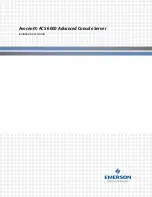
Closing a service call
Perform these procedures to close serviceable events, clear hardware messages, and prepare the server to
return to the customer.
Follow this checklist before performing the procedure:
v
Return the server to the state that the customer normally uses such as IPL type, IPL mode, and the
way the system is configured or partitioned.
Attention:
Before returning the system to the customer, remove the system from service mode. If the
system is left in service mode, it automatically places a call for service every two hours.
v
While you were performing the problem analysis on the original serviceable event, other serviceable
events might have been opened. Close all serviceable events that were opened as a result of your
service activity.
v
Ensure that server verification has been performed and no problems require additional service actions.
v
If the repair was done using the management console online repair procedures, ensure that the original
serviceable event is now closed.
1.
Record the system reference code (SRC), or symptom, and the location code of the field-replaceable
unit (FRU) you replaced, for future reference. Is the server managed by a management console?
v
Yes:
Continue with the next step.
v
No:
Do one of the following steps:
– If the server is managed by Integrated Virtualization Manager (IVM), go to “Closing a service call by using
Integrated Virtualization Manager” on page 177.
– If the server is not partitioned and is running the AIX or Linux operating system, go to “Closing a service call
by using AIX or Linux” on page 173.
2.
On the Hardware Management Console (HMC), open
Manage Serviceable Events
and examine the
service action event log for any open service action events.
3.
Are any service action events open?
v
Yes:
Continue with the next step.
v
No:
If the system attention LED is still on, turn off the LED as described in “Activating and deactivating LEDs” on
page 183. Return the system to the customer.
This completes the repair.
4.
Record the list of open service action events.
5.
From the list of serviceable events recorded in step 4, complete the following steps 6 - step 32 on
page 172 for each open service action event.
6.
Determine the error class of the serviceable event. Record for future use.
7.
Examine the details of the open service action event.
© Copyright IBM Corp. 2013
169
Summary of Contents for 8248-L4T
Page 1: ...Power Systems Disk drives or solid state drives for the 8248 L4T 8408 E8D or 9109 RMD...
Page 2: ......
Page 3: ...Power Systems Disk drives or solid state drives for the 8248 L4T 8408 E8D or 9109 RMD...
Page 10: ...viii Disk drives or solid state drives...
Page 18: ...2 Disk drives or solid state drives...
Page 70: ...54 Disk drives or solid state drives...
Page 90: ...74 Disk drives or solid state drives...
Page 94: ...78 Disk drives or solid state drives...
Page 98: ...82 Disk drives or solid state drives...
Page 142: ...126 Disk drives or solid state drives...
Page 144: ...128 Disk drives or solid state drives...
Page 148: ...132 Disk drives or solid state drives...
Page 158: ...142 Disk drives or solid state drives...
Page 162: ...146 Disk drives or solid state drives...
Page 198: ...182 Disk drives or solid state drives...
Page 202: ...186 Disk drives or solid state drives...
Page 212: ...196 Disk drives or solid state drives...
Page 213: ......
Page 214: ...Printed in USA...
















































